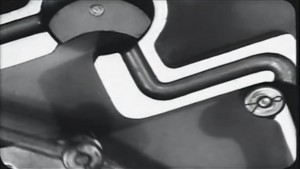
"The third in Steiner’s trilogy of abstract films, Mechanical Principles (1930), is fascinating and more striking than Surf and Seaweed. It is composed of close-up shots of mechanical gears of different kinds in motion; rather than an examination of a single machine, it is an examination of the different kinds of motion produced by machines. Mechanical Principles emphasizes the tension in such machinery between the constancy of force and repetition on the one hand and the irregularity of shapes, sizes, and motions on the other, " Tepperman, 203.
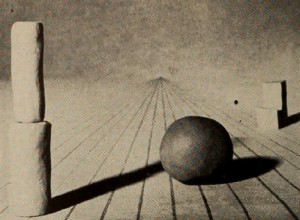
"Relegated to Honorable Mention only because it has been used commercially, No Credit, a brief and amusing abstract film, would under normal conditions have attained a much higher rating. The picture, produced by Leonard W. Tregillus, is a study in forms and movement accompanied by music. Much of it is single frame work that must have required infinite pains. This sounds alarmingly modern and incomprehensible; but since the film does not have to use words and depends for its effect solely on the cameraman's sense of timing, mood and music, the end result is altogether entertaining. Most abstract films seem to illustrate a theory or argue a point. No Credit stands on its own merits of creative form and movement, integrated with a stimulating musical score." Movie Makers, Dec. 1948, 494.
"Hacía un alegato sobre lo que sucede al otro lado de la tranquilidad de la vida burguesa. Se alternaban imágenes de placidez doméstica de la clase media con escenas de la guerra de Vietnam y las rebeliones estudiantiles de la época. Al final de la cinta, sobre la fotografía de un mitin en Tlatelolco, una pregunta: "saber, darse cuenta, ¿cuándo?" "(Vázquez Mantecón, 2012).
"It was an allegation about what happens at the other side of the bourgeois life tranquility. Images of middle class house placidity were alternated with scenes from the Vietnam war and the students' rebellions of the time. At the end of the film, over the photography of a political rally in Tlatelolco, a question: "to know, to notice, when?" " (Vázquez Mantecón, 2012).
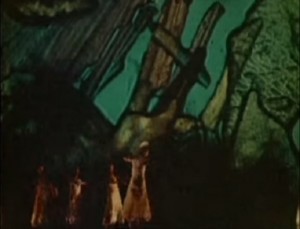
"Dancers move in front of a background made up of crystal formations filmed through a microscope. One of Norman McLaren’s first experimental films." Library and Archives Canada.
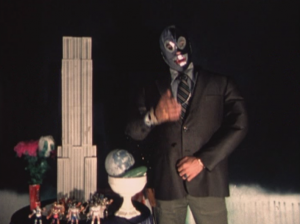
"Siete cortometrajes de Maris Bustamante y Rubén Valencia, integrantes del No Grupo, que indican el acercamiento de artistas plásticos al formato súper 8. Los trabajos del No-Grupo tendieron a hacer una reflexión a la vez lúdica y crítica sobre la naturaleza del arte" Superocheros.
"Seven short films made by Maris Bustamante and Rubén Valencia, members of the No Group, that indicate the interest of artists in the plastic arts to use the super 8 format. The works of the No Group were usually a playful and critical reflexion on the nature of art" Superocheros.
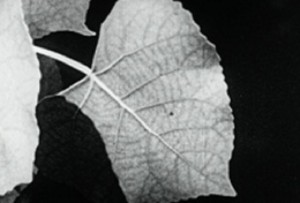
"Portrait of a Young Man, by Henwar Rodakiewicz, ACL, is a triumph of fine photography and sensitive imagination. Abstract in treatment, and speaking through delicately rhythmed scenes of smoke, leaves, grasses, the sea, machinery and the heavens, this film is an attempt to portray in graphic terms a young man's reactions to the beauty, force and mystery of the natural world. In producing the final three reel version, Mr. Rodakiewicz has filmed deliberately toward the one end for more than three years and in many different locales. Although using largely material to be found in nature, he has so transmuted it, by the creative artistry of his selection and control, as to get from each selected scene, not a mere reproduced likeness, but a trenchant and symbolic image. Portrait of a Young Man is beautiful, exciting, workmanlike and distinguished." Movie Makers, Dec. 1932, 538.
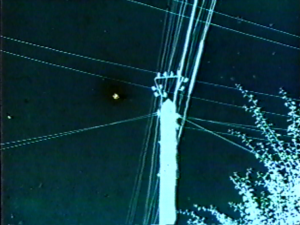
"The little-known experimental film residue 2 credited to one "Angus Hanson," was probably made in 1940s Vancouver or Toronto. (No specific landmarks from either city have been identified.) "Angus Hanson" may have been a pseudonym used by film buff and cineaste Oscar C. Burritt (1908-1974), who worked in Vancouver film before moving to Toronto in 1947. He later worked for CBC Television in Toronto, where he also co-founded, and was very active in, the Toronto Film Society. residue 2 is similar (in content, style and technique) to the experimental film "and-" [ca. 1940-41], made in Vancouver by Dorothy Fowler and Margaret Roberts. Both films combine found footage with hand-painted and scratched film stock. (Note: Oscar Burritt married Dorothy Fowler in January 1942.)"--D.J. Duffy, 2025
"Experimental film. A collage film combining found footage (on mixed film stock) with hand-painted stock and hand-scratched stock leader. No readily identifiable locations are shown." (BC Archives)
"The authorship and origins of this unusual film are not clear. Since it was found in the collection of cineaste Oscar C. Burritt [following his death], it is assumed to have been made by him as a response to the [experimental] film and-, made by his future wife Dorothy Fowler [Burritt]. The Kodachrome stock in the original film has the edge code for 1938; the hidden phrase "Help the people of Denmark" may refer to the Nazi occupation of that country in 1940." (BC Archives)
Some of the found footage used in residue 2 resembles scenes from Oscar Burritt films, including "Three There" and "[Pier D fire, Vancouver]". (D.J. Duffy, 2025)
"A black-and-white silent animation, which Kaneko himself described as a visualization of a musical score, Hungarian Rhapsodie. He experimented with visual geometric abstraction as a means to express the musical score, and this film was his first attempt to use the koma-otoshi technique (the technique being used for time-lapse photography or stop-motion animation)." - Noriko Morisue, "Filming the Everyday: History, Theory, and Aesthetics of Amateur Cinema in Interwar and Wartime Japan" (Yale University: PhD Dissertation, 2020): 99.
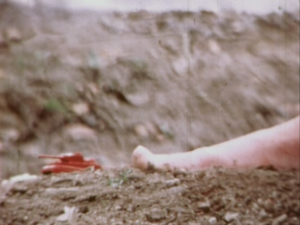
" La segunda primera matriz narraba visual y poéticamente una historia de la humanidad, desde el origen hasta la carrera espacial, como una nueva frontera. En una primera sección, entre tomas de nubes, remolinos y oscuridad, hacía referencia al origen de la vida. (...) Después del lanzamiento del cohete y de las imágenes sobre la exploración del espacio, se ve a una mujer desnuda en el campo. La cámara hace un lento tilt down recorriendo su cuerpo. Al pasar por el pubis sigue a una gota de sangre que comienza a deslizarse por la pierna. Cuando llega al suelo aparece un desfile de tanques de guerra en miniatura, rojos, como los que se habían mostrado anteriormente en la película. La película termina con un cartel que dice 'Pero también se puede parir la nada' " (Vázquez Mantecón, 2012).
La segunda primera matriz [The second first womb] told visually and poetically a story about humanity, from its origin to the Space Race, as a new frontier. In a first section, amongst shots of clouds, swirls and darkness, it referred to the origin of life. (...) After the launch of a rocket and images about exploring space, the film shows a woman naked in the country. The camera makes a slow tilt down of her body. When passing by the pubis, the camera follows a drop of blood that slides by the leg. When it reaches the floor, a parade of miniature war tanks appear, red, like the ones previously shown. The film ends with a sign that says 'But you can also give birth to nothing' " (Vázquez Mantecón, 2012).
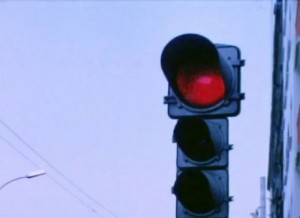
Filme experimental en el que sobre una imagen fija de un semáforo, el sonido es el principal protagonista.
Experimental film in which sound is the main protagonist over a fix image of a traffic light.
Total Pages: 4